Wildlife Photographer of the Year 2013
Advertisements:
[Magic mushrooms]. Creative Visions, Agorastos Papatsanis, Greece. The taller of these two parasol mushrooms is just 30 centimetres. That is tall for a parasol, but their prominence against the tree trunks behind is a slight optical illusion, the result of a double exposure, in-camera. Agorastos found the fungi growing in woodland in the Grevena region of Greece, and was fascinated by the subtle browns of the scales of their [skins] and their relationship to each other. Photographing them from ground level, he chose to expose separately for the young spruce trees, using their trunks as a frame for the emerging fruiting bodies, and to set them against the backdrop of light coming through the autumn leaves at the woodland edge. What he wanted to capture was the fairytale feel of the scene. [Nature is the true designer], he says. Nikon D700 + 70-200mm f2.8 lens; 1/60 sec at f2.8 (-0.3 e/v); ISO 100. (Photo by Agorastos Papatsanis)
[Sharing a shower]. Animals in Their Environment, Michael Nichols, National Geographic, USA. Scientists have long thought that the main reason that lions band together is to hunt – that food, essentially, is the evolutionary force behind their social bonds. Recently, though, it has emerged that the close bonds between males are molded by another pressure: the actions of mutual rivals. C-Boy, a black-maned male lion, and his coalition partner Hildur, once controlled a superior territory in Tanzania’s Serengeti National Park, but they were deposed by a squad of four males known to researchers as the Killers. Nick came across C-boy and Hildur hunkered down in the rain. Though he had spent many months photographing Serengeti lions, he had spent most of his time with larger prides of females. ‘I had never before seen these two senior coalition males together,’ he says. They were used to the car that Nick was in, so he was able to use a simple zoom lens and ambient light. The rain isn't as unwelcome as their expressions suggest: when water is scarce, the closely bonded pair lick drops from their own and each other’s fur. Canon EOS-1D X + 70-200mm f2 lens; 1/350 sec at f2.8; ISO 400. (Photo by Michael Nichols)
[Eye of a toad]. Animal Portraits, Łukasz Bożycki, Poland. Early spring sees a pond near Łukasz’s home city of Warsaw, Poland, full of mating frogs and a few toads. On this March day, Łukasz shared the pond with them for an evening, sitting in the icy water in his chest-high waders, keeping as still as possible, despite the numbing cold, so that the amphibians could get used to him. [I wanted to find a fresh way of portraying the amphibians], he says, [at water level]. Using a telephoto lens, he focused on one lone toad and waited for the sun to dip almost below the horizon before pressing the shutter, using flash to bring out the details in the shadow. His prize was [the glorious pool of sunset colour] and fiery glow of the toad’s eye. Nikon D80 + 70-300mm f4.5-5.6 lens + extension tube; 1/125 sec at f9 (-2.3 e/v); ISO 100; built-in flash. (Photo by Łukasz Bożycki)
[Pearls of spring]. Underwater Worlds, Solvin Zankl, Germany. Each year Solvin marks the end of winter by going into the field to photograph toads emerging from hibernation and migrating to their breeding ponds. This time he went to Solling, in western Germany, a wildlife haven with both forests and wetlands. As the ponds began to boil with mating toads, he chose his location and carefully lowered his camera and strobes into the water, trying to avoid disturbing either the toads or the muddy bottom. By linking his camera to his laptop with a special USB wire, he could see all the activity below the surface and take intimate, non-invasive pictures. [To me the toadspawn looks like threaded black pearls], says Solvin, [neatly arranged in the scenery]. He was captivated by the event, as he has been since childhood, and rejoiced in the spring sunlight and the sounds of frogs, toads and running water – [all somehow reassuring after the long winter]. Nikon D3s; modified wide-angle lens; 1/250 sec at f8; Seacam housing; three Seacam strobes; remotely triggered using Nikon Camera Control Pro 2 software. (Photo by Solvin Zankl)
[Sockeye catch]. Valter Bernardeschi, Italy. Each year between July and September, millions of sockeye salmon migrate from the Pacific back up rivers to the fresh waters of Lake Kuril, to spawn in the waters where they were born. This volcanic crater lake, in the South Kamchatka Sanctuary in the Russian Far East, is the largest sockeye salmon spawning ground in Eurasia. The annual glut attracts Kamchatka brown bears from the surrounding forests to feast on the fish and fatten up for hibernation. Following the example of the bears, Valter waded into the icy water to get the right perspective and to wait for an action moment – a real test of physical endurance. By doing so, [I almost became one of them], and [in the silence of the Garden of Eden I did not think about anything else]. This bear reared up some three meters on its hind legs and scanned the water for fish. Suddenly it pounced on a female salmon swollen with roe, the force sending a string of crimson eggs spinning out of her body. Nikon D4 + 200-400mm f4 lens at 250mm; 1/8000 sec at f4; ISO 720; Gitzo GT3530s tripod. (Photo by Valter Bernardeschi)
[Cold-blooded killing]. Behaviour: Cold-Blooded Animals, Alejandro Prieto, Mexico. Corcovado National Park, on the Pacific coast of Costa Rica, is accessible only by boat or aircraft. Early one morning, Alejandro heard there were bull sharks near the beach and set off to look for them. It wasn’t long before he heard a very loud noise – splashing and a hammering sound. Out of the sea came a huge crocodile with a large green turtle in its mouth, which was flapping its flippers and opening and closing its eyes. [With a fast movement, the crocodile held the turtle by its flipper], says Alejandro, [and then, with a flick of its jaws, grabbed the still-living reptile by its head. I willed the crocodile to be still for a moment, while I struggled to keep the camera steady]. He managed just one shot before the crocodile headed for the sea and the mouth of the river, clutching its strange prey. Nikon D4 + 200-400mm f4 lens; 1/500 sec at f4; ISO 400. (Photo by Alejandro Prieto)
[Twin hope]. The Gerald Durrell Award for Endangered Species, Diana Rebman, USA. The hike to the mountain gorillas was particularly arduous that day. [Consistent rain made the ground very slippery], says Diana, [and the hillside was so steep it felt vertical]. The gorilla group ahead finally settled to feed. [What made all the physical effort worth it was to see the mother with her two babies]. This is only the fifth set of twins ever to be reported in Rwanda’s Volcanoes National Park. The mother was a natural with her six-month-old infants, nursing them while feeding herself. When the silverback leader of the group chased her from a nettle patch, she vocalised at him, loudly, but moved on. [In this picture, she is still tense from the encounter], says Diana, [and continues to glance across at him while she eats. Her twins, in the comfort of their mother’s strong arms, appear blissfully ignorant]. The twins’ future, though, remains uncertain. The mountain gorilla is officially listed as critically endangered. Habitat loss, poaching and disease are still threats, and the gorillas are also at risk from warring rebel factions active in their range, affecting not only the animals but also the rangers and the tourism revenue that funds their protection. Nikon D7000 + 70-200mm f2.8 lens; 1/160 sec at f5 (-0.3 e/v); ISO 1600. (Photo by Diana Rebman)
[The pull of a dugong]. Douglas Seifert, USA. When a dugong is feeding in the bay of Marsa Alam, Egypt, snorkellers flock to see it. On this occasion, Douglas found himself watching the snorkelers as more and more of them hassled it until it fled for the open sea. These tourists would undoubtedly agree that without dugongs the world would be a poorer place, but without control of the numbers and behaviour of snorkellers and divers, they only add to the pressure faced by the dugongs, just seven of which are known to live along the 100km coastline. The real problem is urbanisation of the coast, which is destroying the seagrass beds the dugongs depend on. What is urgently needed are. Nikon D800 + 15mm fisheye f2.8 lens; 1/320 sec at f16; ISO 640; Nauticam housing; two INON z-220 strobes. (Photo by Douglas Seifert)
[Harvest gold]. Etienne Francey, Switzerland. Late one July evening, walking slowly along the edge of a wheat field near his village – Cousset, in Switzerland – looking for subjects to photograph, Etienne noticed [a little ball] stuck to an ear of wheat. [To my surprise], says Etienne, [it was a harvest mouse, nibbling the grain]. Etienne approached until he was a few meters away and managed to photograph the tiny mouse at various angles before it scuttled back down the wheat stalk. [The meeting was brief but extraordinary], he adds. [This was my favourite out of all the portraits], showing it eating, its prehensile tail helping it to balance. Nikon D7000 + 300mm f4 lens; 1/320 sec at f4 (-0.3 e/v); ISO 500. (Photo by Etienne Francey)
![[Magic mushrooms]. Creative Visions, Agorastos Papatsanis, Greece. The taller of these two parasol mushrooms is just 30 centimetres. That is tall for a parasol, but their prominence against the tree trunks behind is a slight optical illusion, the result of a double exposure, in-camera. Agorastos found the fungi growing in woodland in the Grevena region of Greece, and was fascinated by the subtle browns of the scales of their [skins] and their relationship to each other. Photographing them from ground level, he chose to expose separately for the young spruce trees, using their trunks as a frame for the emerging fruiting bodies, and to set them against the backdrop of light coming through the autumn leaves at the woodland edge. What he wanted to capture was the fairytale feel of the scene. [Nature is the true designer], he says. Nikon D700 + 70-200mm f2.8 lens; 1/60 sec at f2.8 (-0.3 e/v); ISO 100. (Photo by Agorastos Papatsanis) [Magic mushrooms]. Creative Visions, Agorastos Papatsanis, Greece. The taller of these two parasol mushrooms is just 30 centimetres. That is tall for a parasol, but their prominence against the tree trunks behind is a slight optical illusion, the result of a double exposure, in-camera. Agorastos found the fungi growing in woodland in the Grevena region of Greece, and was fascinated by the subtle browns of the scales of their [skins] and their relationship to each other. Photographing them from ground level, he chose to expose separately for the young spruce trees, using their trunks as a frame for the emerging fruiting bodies, and to set them against the backdrop of light coming through the autumn leaves at the woodland edge. What he wanted to capture was the fairytale feel of the scene. [Nature is the true designer], he says. Nikon D700 + 70-200mm f2.8 lens; 1/60 sec at f2.8 (-0.3 e/v); ISO 100. (Photo by Agorastos Papatsanis)](http://img.gagdaily.com/uploads/posts/app/2013/thumbs/0000f66e_medium.jpg)
![[Sharing a shower]. Animals in Their Environment, Michael Nichols, National Geographic, USA. Scientists have long thought that the main reason that lions band together is to hunt – that food, essentially, is the evolutionary force behind their social bonds. Recently, though, it has emerged that the close bonds between males are molded by another pressure: the actions of mutual rivals. C-Boy, a black-maned male lion, and his coalition partner Hildur, once controlled a superior territory in Tanzania’s Serengeti National Park, but they were deposed by a squad of four males known to researchers as the Killers. Nick came across C-boy and Hildur hunkered down in the rain. Though he had spent many months photographing Serengeti lions, he had spent most of his time with larger prides of females. ‘I had never before seen these two senior coalition males together,’ he says. They were used to the car that Nick was in, so he was able to use a simple zoom lens and ambient light. The rain isn't as unwelcome as their expressions suggest: when water is scarce, the closely bonded pair lick drops from their own and each other’s fur. Canon EOS-1D X + 70-200mm f2 lens; 1/350 sec at f2.8; ISO 400. (Photo by Michael Nichols) [Sharing a shower]. Animals in Their Environment, Michael Nichols, National Geographic, USA. Scientists have long thought that the main reason that lions band together is to hunt – that food, essentially, is the evolutionary force behind their social bonds. Recently, though, it has emerged that the close bonds between males are molded by another pressure: the actions of mutual rivals. C-Boy, a black-maned male lion, and his coalition partner Hildur, once controlled a superior territory in Tanzania’s Serengeti National Park, but they were deposed by a squad of four males known to researchers as the Killers. Nick came across C-boy and Hildur hunkered down in the rain. Though he had spent many months photographing Serengeti lions, he had spent most of his time with larger prides of females. ‘I had never before seen these two senior coalition males together,’ he says. They were used to the car that Nick was in, so he was able to use a simple zoom lens and ambient light. The rain isn't as unwelcome as their expressions suggest: when water is scarce, the closely bonded pair lick drops from their own and each other’s fur. Canon EOS-1D X + 70-200mm f2 lens; 1/350 sec at f2.8; ISO 400. (Photo by Michael Nichols)](http://img.gagdaily.com/uploads/posts/app/2013/thumbs/0000f66f_medium.jpg)
![[Eye of a toad]. Animal Portraits, Łukasz Bożycki, Poland. Early spring sees a pond near Łukasz’s home city of Warsaw, Poland, full of mating frogs and a few toads. On this March day, Łukasz shared the pond with them for an evening, sitting in the icy water in his chest-high waders, keeping as still as possible, despite the numbing cold, so that the amphibians could get used to him. ‘I wanted to find a fresh way of portraying the amphibians,’ he says, ‘at water level.’ Using a telephoto lens, he focused on one lone toad and waited for the sun to dip almost below the horizon before pressing the shutter, using flash to bring out the details in the shadow. His prize was [the glorious pool of sunset colour] and fiery glow of the toad’s eye. Nikon D80 + 70-300mm f4.5-5.6 lens + extension tube; 1/125 sec at f9 (-2.3 e/v); ISO 100; built-in flash. (Photo by Łukasz Bożycki) [Eye of a toad]. Animal Portraits, Łukasz Bożycki, Poland. Early spring sees a pond near Łukasz’s home city of Warsaw, Poland, full of mating frogs and a few toads. On this March day, Łukasz shared the pond with them for an evening, sitting in the icy water in his chest-high waders, keeping as still as possible, despite the numbing cold, so that the amphibians could get used to him. ‘I wanted to find a fresh way of portraying the amphibians,’ he says, ‘at water level.’ Using a telephoto lens, he focused on one lone toad and waited for the sun to dip almost below the horizon before pressing the shutter, using flash to bring out the details in the shadow. His prize was [the glorious pool of sunset colour] and fiery glow of the toad’s eye. Nikon D80 + 70-300mm f4.5-5.6 lens + extension tube; 1/125 sec at f9 (-2.3 e/v); ISO 100; built-in flash. (Photo by Łukasz Bożycki)](http://img.gagdaily.com/uploads/posts/app/2013/thumbs/0000f670_medium.jpg)
![[Pearls of spring]. Underwater Worlds, Solvin Zankl, Germany. Each year Solvin marks the end of winter by going into the field to photograph toads emerging from hibernation and migrating to their breeding ponds. This time he went to Solling, in western Germany, a wildlife haven with both forests and wetlands. As the ponds began to boil with mating toads, he chose his location and carefully lowered his camera and strobes into the water, trying to avoid disturbing either the toads or the muddy bottom. By linking his camera to his laptop with a special USB wire, he could see all the activity below the surface and take intimate, non-invasive pictures. [To me the toadspawn looks like threaded black pearls], says Solvin, [neatly arranged in the scenery]. He was captivated by the event, as he has been since childhood, and rejoiced in the spring sunlight and the sounds of frogs, toads and running water – [all somehow reassuring after the long winter]. Nikon D3s; modified wide-angle lens; 1/250 sec at f8; Seacam housing; three Seacam strobes; remotely triggered using Nikon Camera Control Pro 2 software. (Photo by Solvin Zankl) [Pearls of spring]. Underwater Worlds, Solvin Zankl, Germany. Each year Solvin marks the end of winter by going into the field to photograph toads emerging from hibernation and migrating to their breeding ponds. This time he went to Solling, in western Germany, a wildlife haven with both forests and wetlands. As the ponds began to boil with mating toads, he chose his location and carefully lowered his camera and strobes into the water, trying to avoid disturbing either the toads or the muddy bottom. By linking his camera to his laptop with a special USB wire, he could see all the activity below the surface and take intimate, non-invasive pictures. [To me the toadspawn looks like threaded black pearls], says Solvin, [neatly arranged in the scenery]. He was captivated by the event, as he has been since childhood, and rejoiced in the spring sunlight and the sounds of frogs, toads and running water – [all somehow reassuring after the long winter]. Nikon D3s; modified wide-angle lens; 1/250 sec at f8; Seacam housing; three Seacam strobes; remotely triggered using Nikon Camera Control Pro 2 software. (Photo by Solvin Zankl)](http://img.gagdaily.com/uploads/posts/app/2013/thumbs/0000f671_medium.jpg)
![[Sockeye catch]. Valter Bernardeschi, Italy. Each year between July and September, millions of sockeye salmon migrate from the Pacific back up rivers to the fresh waters of Lake Kuril, to spawn in the waters where they were born. This volcanic crater lake, in the South Kamchatka Sanctuary in the Russian Far East, is the largest sockeye salmon spawning ground in Eurasia. The annual glut attracts Kamchatka brown bears from the surrounding forests to feast on the fish and fatten up for hibernation. Following the example of the bears, Valter waded into the icy water to get the right perspective and to wait for an action moment – a real test of physical endurance. By doing so, [I almost became one of them], and [in the silence of the Garden of Eden I did not think about anything else]. This bear reared up some three meters on its hind legs and scanned the water for fish. Suddenly it pounced on a female salmon swollen with roe, the force sending a string of crimson eggs spinning out of her body. Nikon D4 + 200-400mm f4 lens at 250mm; 1/8000 sec at f4; ISO 720; Gitzo GT3530s tripod. (Photo by Valter Bernardeschi) [Sockeye catch]. Valter Bernardeschi, Italy. Each year between July and September, millions of sockeye salmon migrate from the Pacific back up rivers to the fresh waters of Lake Kuril, to spawn in the waters where they were born. This volcanic crater lake, in the South Kamchatka Sanctuary in the Russian Far East, is the largest sockeye salmon spawning ground in Eurasia. The annual glut attracts Kamchatka brown bears from the surrounding forests to feast on the fish and fatten up for hibernation. Following the example of the bears, Valter waded into the icy water to get the right perspective and to wait for an action moment – a real test of physical endurance. By doing so, [I almost became one of them], and [in the silence of the Garden of Eden I did not think about anything else]. This bear reared up some three meters on its hind legs and scanned the water for fish. Suddenly it pounced on a female salmon swollen with roe, the force sending a string of crimson eggs spinning out of her body. Nikon D4 + 200-400mm f4 lens at 250mm; 1/8000 sec at f4; ISO 720; Gitzo GT3530s tripod. (Photo by Valter Bernardeschi)](http://img.gagdaily.com/uploads/posts/app/2013/thumbs/0000f672_medium.jpg)
![[Cold-blooded killing]. Behaviour: Cold-Blooded Animals, Alejandro Prieto, Mexico. Corcovado National Park, on the Pacific coast of Costa Rica, is accessible only by boat or aircraft. Early one morning, Alejandro heard there were bull sharks near the beach and set off to look for them. It wasn’t long before he heard a very loud noise – splashing and a hammering sound. Out of the sea came a huge crocodile with a large green turtle in its mouth, which was flapping its flippers and opening and closing its eyes. [With a fast movement, the crocodile held the turtle by its flipper], says Alejandro, [and then, with a flick of its jaws, grabbed the still-living reptile by its head. I willed the crocodile to be still for a moment, while I struggled to keep the camera steady]. He managed just one shot before the crocodile headed for the sea and the mouth of the river, clutching its strange prey. Nikon D4 + 200-400mm f4 lens; 1/500 sec at f4; ISO 400. (Photo by Alejandro Prieto) [Cold-blooded killing]. Behaviour: Cold-Blooded Animals, Alejandro Prieto, Mexico. Corcovado National Park, on the Pacific coast of Costa Rica, is accessible only by boat or aircraft. Early one morning, Alejandro heard there were bull sharks near the beach and set off to look for them. It wasn’t long before he heard a very loud noise – splashing and a hammering sound. Out of the sea came a huge crocodile with a large green turtle in its mouth, which was flapping its flippers and opening and closing its eyes. [With a fast movement, the crocodile held the turtle by its flipper], says Alejandro, [and then, with a flick of its jaws, grabbed the still-living reptile by its head. I willed the crocodile to be still for a moment, while I struggled to keep the camera steady]. He managed just one shot before the crocodile headed for the sea and the mouth of the river, clutching its strange prey. Nikon D4 + 200-400mm f4 lens; 1/500 sec at f4; ISO 400. (Photo by Alejandro Prieto)](http://img.gagdaily.com/uploads/posts/app/2013/thumbs/0000f673_medium.jpg)
![[Twin hope]. The Gerald Durrell Award for Endangered Species, Diana Rebman, USA. The hike to the mountain gorillas was particularly arduous that day. [Consistent rain made the ground very slippery], says Diana, [and the hillside was so steep it felt vertical]. The gorilla group ahead finally settled to feed. [What made all the physical effort worth it was to see the mother with her two babies]. This is only the fifth set of twins ever to be reported in Rwanda’s Volcanoes National Park. The mother was a natural with her six-month-old infants, nursing them while feeding herself. When the silverback leader of the group chased her from a nettle patch, she vocalised at him, loudly, but moved on. [In this picture, she is still tense from the encounter], says Diana, [and continues to glance across at him while she eats. Her twins, in the comfort of their mother’s strong arms, appear blissfully ignorant]. The twins’ future, though, remains uncertain. The mountain gorilla is officially listed as critically endangered. Habitat loss, poaching and disease are still threats, and the gorillas are also at risk from warring rebel factions active in their range, affecting not only the animals but also the rangers and the tourism revenue that funds their protection. Nikon D7000 + 70-200mm f2.8 lens; 1/160 sec at f5 (-0.3 e/v); ISO 1600. (Photo by Diana Rebman) [Twin hope]. The Gerald Durrell Award for Endangered Species, Diana Rebman, USA. The hike to the mountain gorillas was particularly arduous that day. [Consistent rain made the ground very slippery], says Diana, [and the hillside was so steep it felt vertical]. The gorilla group ahead finally settled to feed. [What made all the physical effort worth it was to see the mother with her two babies]. This is only the fifth set of twins ever to be reported in Rwanda’s Volcanoes National Park. The mother was a natural with her six-month-old infants, nursing them while feeding herself. When the silverback leader of the group chased her from a nettle patch, she vocalised at him, loudly, but moved on. [In this picture, she is still tense from the encounter], says Diana, [and continues to glance across at him while she eats. Her twins, in the comfort of their mother’s strong arms, appear blissfully ignorant]. The twins’ future, though, remains uncertain. The mountain gorilla is officially listed as critically endangered. Habitat loss, poaching and disease are still threats, and the gorillas are also at risk from warring rebel factions active in their range, affecting not only the animals but also the rangers and the tourism revenue that funds their protection. Nikon D7000 + 70-200mm f2.8 lens; 1/160 sec at f5 (-0.3 e/v); ISO 1600. (Photo by Diana Rebman)](http://img.gagdaily.com/uploads/posts/app/2013/thumbs/0000f674_medium.jpg)
![[The pull of a dugong]. Douglas Seifert, USA. When a dugong is feeding in the bay of Marsa Alam, Egypt, snorkellers flock to see it. On this occasion, Douglas found himself watching the snorkelers as more and more of them hassled it until it fled for the open sea. These tourists would undoubtedly agree that without dugongs the world would be a poorer place, but without control of the numbers and behaviour of snorkellers and divers, they only add to the pressure faced by the dugongs, just seven of which are known to live along the 100km coastline. The real problem is urbanisation of the coast, which is destroying the seagrass beds the dugongs depend on. What is urgently needed are. Nikon D800 + 15mm fisheye f2.8 lens; 1/320 sec at f16; ISO 640; Nauticam housing; two INON z-220 strobes. (Photo by Douglas Seifert) [The pull of a dugong]. Douglas Seifert, USA. When a dugong is feeding in the bay of Marsa Alam, Egypt, snorkellers flock to see it. On this occasion, Douglas found himself watching the snorkelers as more and more of them hassled it until it fled for the open sea. These tourists would undoubtedly agree that without dugongs the world would be a poorer place, but without control of the numbers and behaviour of snorkellers and divers, they only add to the pressure faced by the dugongs, just seven of which are known to live along the 100km coastline. The real problem is urbanisation of the coast, which is destroying the seagrass beds the dugongs depend on. What is urgently needed are. Nikon D800 + 15mm fisheye f2.8 lens; 1/320 sec at f16; ISO 640; Nauticam housing; two INON z-220 strobes. (Photo by Douglas Seifert)](http://img.gagdaily.com/uploads/posts/app/2013/thumbs/0000f675_medium.jpg)
![[Harvest gold]. Etienne Francey, Switzerland. Late one July evening, walking slowly along the edge of a wheat field near his village – Cousset, in Switzerland – looking for subjects to photograph, Etienne noticed [a little ball] stuck to an ear of wheat. [To my surprise], says Etienne, [it was a harvest mouse, nibbling the grain]. Etienne approached until he was a few meters away and managed to photograph the tiny mouse at various angles before it scuttled back down the wheat stalk. [The meeting was brief but extraordinary], he adds. [This was my favourite out of all the portraits], showing it eating, its prehensile tail helping it to balance. Nikon D7000 + 300mm f4 lens; 1/320 sec at f4 (-0.3 e/v); ISO 500. (Photo by Etienne Francey) [Harvest gold]. Etienne Francey, Switzerland. Late one July evening, walking slowly along the edge of a wheat field near his village – Cousset, in Switzerland – looking for subjects to photograph, Etienne noticed [a little ball] stuck to an ear of wheat. [To my surprise], says Etienne, [it was a harvest mouse, nibbling the grain]. Etienne approached until he was a few meters away and managed to photograph the tiny mouse at various angles before it scuttled back down the wheat stalk. [The meeting was brief but extraordinary], he adds. [This was my favourite out of all the portraits], showing it eating, its prehensile tail helping it to balance. Nikon D7000 + 300mm f4 lens; 1/320 sec at f4 (-0.3 e/v); ISO 500. (Photo by Etienne Francey)](http://img.gagdaily.com/uploads/posts/app/2013/thumbs/0000f676_medium.jpg)
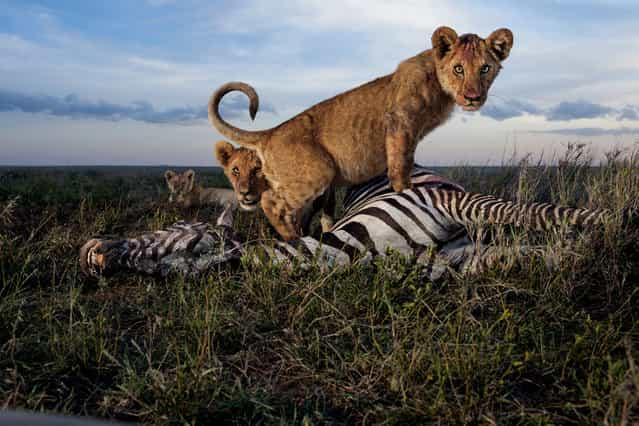
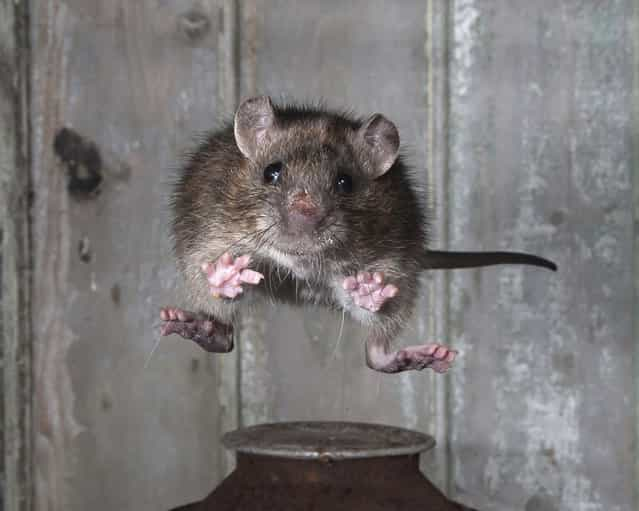
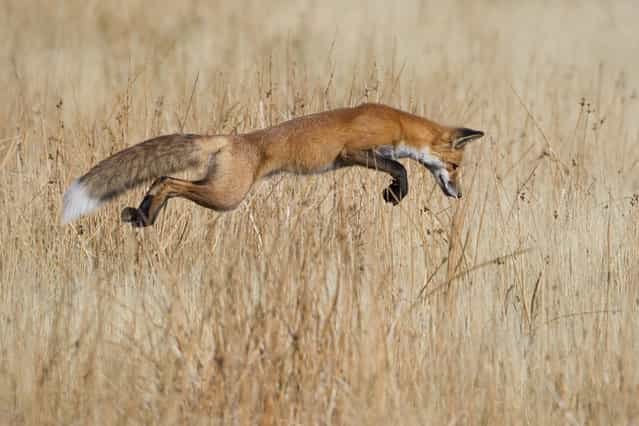
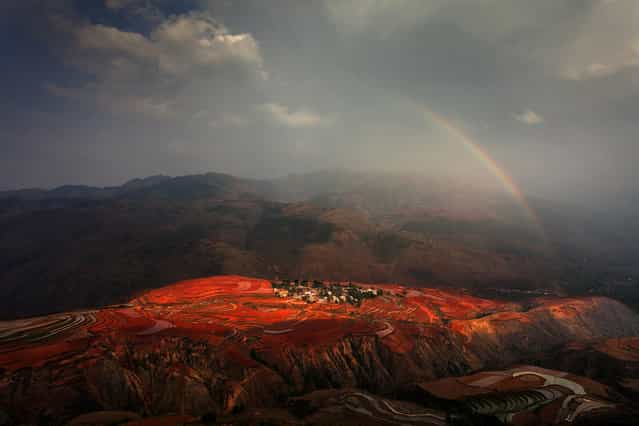
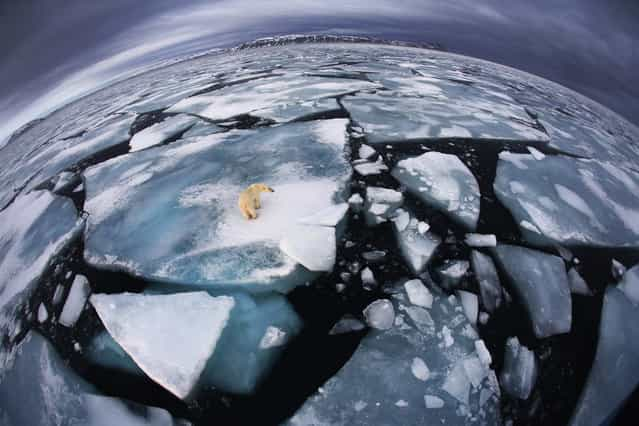
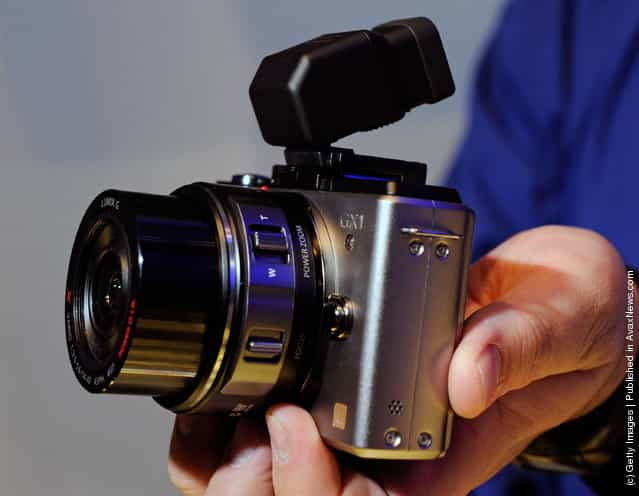

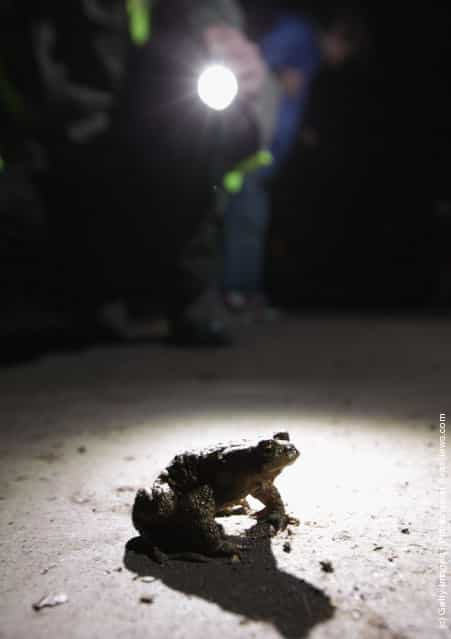

![Rare [Hybrid] Total Solar Eclipse Rare [Hybrid] Total Solar Eclipse](http://img.gagdaily.com/uploads/posts/fact/2013/short/00010c55_medium.jpg)






